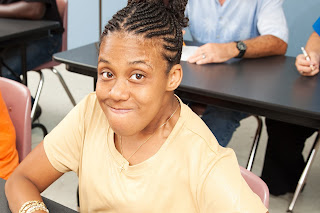Recommendations are due to the state legislature in November. Community Q&A on Sept. 24
Schools in Washington state exclude and segregate students with disabilities at some of the highest rates in the nation, resulting in lack of access to a general education that will prepare them for jobs and post-secondary learning.
The Department of Social and Health Services (DSHS) agencies, the state Office of the Superintendent of Public Instruction (OSPI) and the Center for Change in Transition Services have been collaborating for a couple of years to address inequities and outcomes for high school students with disabilities, including supports to help them transition into employment. They taped a webinar on their progress and have scheduled two question and answer meetings for September 24.
Registration for Q&As:
- Thursday, September 24, from 11 am to noon: https://zoom.us/meeting/register/tJUrceyopzwuG9yU8n3XITiyXXINRHZVBH7X
- Thursday, September 24, from 3 to 4 pm: https://zoom.us/meeting/register/tJwsdeyrrzsiEtZ5WeQeUYmSqDb0U6cKypN0
Advocacy tip: Review the information, then raise the matter with your school board members. Their contact information should be on your school district’s website.
Ask: What are they doing to address the issues raised? School boards are the governing bodies in charge of your school district’s policies and funding choices. They also hire the superintendent, who, in turn, implements the policies and practices that the board defines for them.
If you have concerns related to your student’s IEP, then you need to work with the IEP team. Advocacy with the school board comes into play when you are advocating for districtwide policies, practices, and funding, or if you have concerns about discrimination or violations of state or federal law.
What is prompting this work?
General education access = improved outcomes
- Washington ranks 44 out of 50 states for inclusive practices
- 58% of students with disabilities access general education for 80-100% of the day
- For students of color, that level of access falls to 49%
- For students with intellectual disabilities that access falls to 6% (bottom 3 in the nation)
- 20% of graduates with disabilities completed a diploma pathway at grade-level standard and 70% pursued an alternative option
- 25% of students with disabilities are not engaged in any post-secondary activities one year after leaving school
- That rises to 50% for students with intellectual and developmental disabilities.
Washington’s cross-agency transition collaborative includes the OSPI, the DSHS Developmental Disabilities Administration (DDA) and Division of Vocational Rehabilitation (DVR), their respective advisory councils, and the Center for Change in Transition Services at Seattle University.
These groups have been working with secondary transition stakeholders statewide to align efforts to improve post-school outcomes for students with disabilities. The webinar video was recorded on August 28, 2020, and provides updates on joint activities and next steps for cross-agency efforts, including the development of a final report due to the state legislature in November 2020.
As a follow up to the recorded webinar, transition collaborative members will host two live question-and-answer sessions on September 24, 2020. Please join them by registering for one of the following sessions:
Thursday, September 24, from 11 am to noon: https://zoom.us/meeting/register/tJUrceyopzwuG9yU8n3XITiyXXINRHZVBH7X
Thursday, September 24, from 3 to 4 pm: https://zoom.us/meeting/register/tJwsdeyrrzsiEtZ5WeQeUYmSqDb0U6cKypN0

